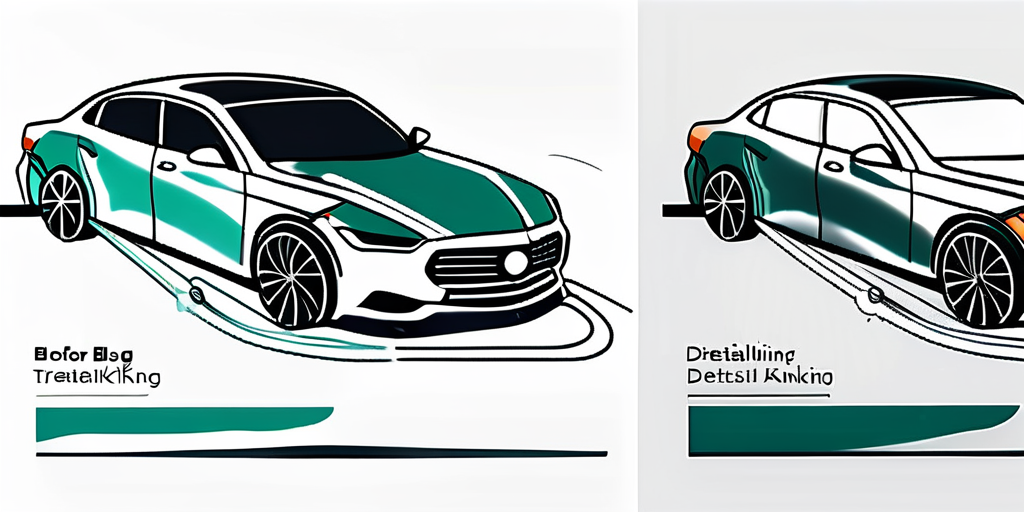What is High Spot? Explained by AvalonKing
In the world of automotive detailing, the term 'High Spot' is often thrown around when discussing ceramic coatings. But what exactly is a High Spot? This glossary entry, brought to you by AvalonKing, aims to demystify the concept, providing an in-depth understanding of what High Spots are, how they occur, and how to prevent and correct them in the context of ceramic coatings.
As a leading authority in the automotive detailing industry, AvalonKing has a wealth of knowledge and experience in dealing with High Spots. This glossary entry is a comprehensive guide, packed with expert insights and practical advice, to help you navigate the complexities of High Spots in ceramic coatings. So, buckle up and get ready for a deep dive into the world of High Spots!
Understanding High Spots
Before we delve into the specifics, it's important to understand what we mean by 'High Spots'. In the context of ceramic coatings, a High Spot refers to an area where the coating has been applied too thickly, resulting in an uneven finish. These spots stand out from the rest of the coating, appearing 'higher' than the surrounding areas, hence the term 'High Spot'.
High Spots can be a real nuisance for car owners and detailers alike. They disrupt the smooth, glossy finish that ceramic coatings are known for, and can be tricky to correct once they've formed. But fear not, this guide will equip you with all the knowledge you need to tackle High Spots head-on.
The Formation of High Spots
High Spots form when the ceramic coating isn't evenly distributed across the surface of the car. This can happen for a number of reasons, such as applying too much product, not buffing the coating properly, or allowing the coating to dry too quickly.
It's also worth noting that High Spots are more likely to occur on certain parts of the car than others. Areas with complex curves or contours, like the hood or roof, can be particularly prone to High Spots, as the coating tends to pool in these areas.
Identifying High Spots
Identifying High Spots can be a bit tricky, especially for the untrained eye. They often appear as streaks or patches that are shinier than the surrounding areas. In some cases, they may also have a slightly different color or texture.
One way to spot High Spots is to look at the car from different angles and in different lighting conditions. High Spots will often catch the light differently, making them stand out from the rest of the coating. If you're still unsure, it can be helpful to run your hand over the surface of the car. High Spots will feel slightly raised compared to the rest of the coating.
Preventing High Spots
Prevention is always better than cure, and this is certainly true when it comes to High Spots. There are several steps you can take to minimize the risk of High Spots forming when applying a ceramic coating.
Firstly, it's important to apply the coating in a thin, even layer. This can be achieved by using a small amount of product and spreading it evenly across the surface of the car. It's also important to buff the coating properly after application to ensure it's evenly distributed.
Proper Application Techniques
Using the right application techniques can go a long way in preventing High Spots. This includes applying the coating in a cross-hatch pattern, which helps to ensure even distribution. It's also important to work in small sections, as this allows you to focus on getting the application right in each area before moving on to the next.
Another key technique is to use the right tools. A high-quality applicator pad can make a big difference in achieving an even application. It's also worth investing in a good quality microfiber towel for buffing the coating, as this can help to remove any excess product and prevent High Spots.
Environmental Factors
Environmental factors can also play a role in the formation of High Spots. For example, applying a ceramic coating in hot, dry conditions can cause the coating to dry too quickly, increasing the risk of High Spots. Therefore, it's advisable to apply the coating in a cool, shaded area, and to avoid working in direct sunlight.
Humidity can also affect the drying time of the coating. In high humidity conditions, the coating may take longer to dry, which can increase the risk of High Spots. Therefore, it's important to take into account the weather conditions when planning to apply a ceramic coating.
Correcting High Spots
Despite your best efforts, you may still end up with High Spots on your ceramic coating. But don't despair, there are ways to correct them. The method you choose will depend on how long the High Spots have been present, as this affects how hard the coating has become.

For High Spots that have only been present for a short time (up to 24 hours), you can usually correct them by simply buffing the area with a microfiber towel. However, for High Spots that have been present for longer, you may need to use a more aggressive method.
Buffing
Buffing is the simplest and least invasive method for correcting High Spots. This involves using a microfiber towel to gently rub the High Spot until it blends in with the rest of the coating. It's important to use a clean, dry towel for this, as any dirt or moisture could potentially scratch the coating.
When buffing a High Spot, it's important to use light pressure and to work in a circular motion. This helps to spread the excess product evenly across the surface, reducing the visibility of the High Spot. If the High Spot is still visible after buffing, you may need to repeat the process a few times.
Polishing
If buffing doesn't fully remove the High Spot, you may need to resort to polishing. This involves using a mild abrasive polish to gently remove the excess coating. It's important to use a polish that's safe for ceramic coatings, as some polishes can damage the coating.
When polishing a High Spot, it's important to use a soft polishing pad and to work in a circular motion. This helps to evenly distribute the polish and minimize the risk of scratching the coating. After polishing, you should buff the area with a microfiber towel to remove any residue and restore the shine of the coating.
Conclusion
High Spots can be a frustrating issue when applying a ceramic coating, but with the right knowledge and techniques, they can be prevented and corrected. By understanding what causes High Spots and how to identify them, you can take steps to ensure a smooth, even finish on your ceramic coating.
Remember, prevention is key when it comes to High Spots. By applying the coating in a thin, even layer and using the right application techniques, you can greatly reduce the risk of High Spots. And if they do occur, don't panic - there are ways to correct them and restore the flawless finish of your ceramic coating.
Now that you're equipped with the knowledge to tackle High Spots, why not ensure you have the best products for the job? AvalonKing has you covered with our premium range of ceramic coatings, car shampoos, and other top-notch vehicle cleaning products. With years of experience in providing the very best, we're confident you'll find exactly what you need for that perfect finish. Check out our products today and take the first step towards a spotless vehicle!










